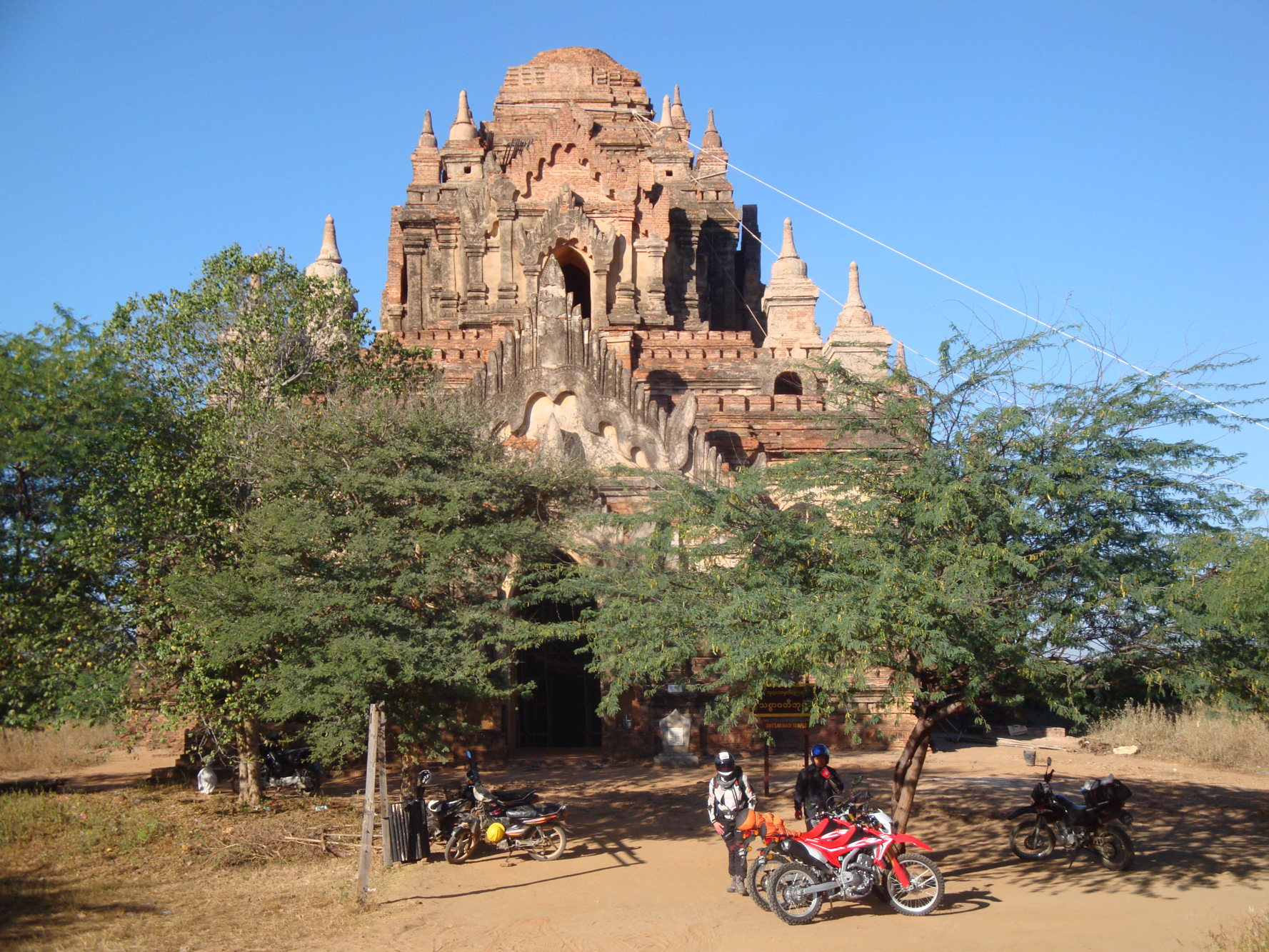To live in South Africa as an adventure biker has many advantages. It is a great place to get your motorcycle fitted out with state-of-the-art equipment, as well as a great starting point for an expedition to some of the wildest and most beautiful countries in Africa, such as Botswana, Zambia, Namibia, Tanzania, and Rwanda. But once you have visited all these gorgeous destinations, including the Serengeti, Chobe National Park, and Moremi Game Reserve and witnessed the silverback gorillas in Rwanda, where to next?
That was the question we were pondering as we sat around the dinner table at our seaside home in Melkbosstrand in early 2019. Both Kim and I were also seasoned off-road racers, so to combine our adventure bike skills with our dirt bike abilities seemed like a logical choice at the time. In addition to that, we had spent many months in Cambodia, Indonesia, and Nepal and loved the culture and food of those remote countries. How we stumbled on mystical Burma or Myanmar, as it is now known, eludes me, but what an adventure it turned out to be.
Situated in Southeast Asia, Myanmar is bordered by Bangladesh, Laos, India, and Thailand, as well as China. The Andaman Sea and the Bay of Bengal form the southern coastline. Under a strict military dictatorship till 2011, the country was off-limits to all Western travellers for many decades. Although a mostly peaceful Buddhist country, most foreign embassies still advise citizens to stay clear of Rakhine State on the west coast, due to the ongoing ethnic genocide known as the Rohingya conflict. The rest of Myanmar is classified as a “high caution” country but is generally safe for travellers provided that the correct precautions are taken.
Before considering an adventure bike expedition to Myanmar, careful consideration should be given to the following areas of planning: Navigation, Weather, and Accommodation; Personal Health and Inoculations; Motorcycle Spares and Maintenance; General Expedition Kit List; Rider and Protective Clothing; Travel Documentation and Passports.
Navigation, Weather, and Accommodation
It is vital to remember that good English maps for Myanmar are virtually impossible to get a hold of. This is even more true if you plan to visit the more remote mountainous areas to the west of the country. In addition to that, English road signs or markings are inexistent as everything is only in Burmese. Considering that the country is in excess of 260,000 square miles (or 676,000 square kilometres), our original expedition plans included hiring a seasoned local Burmese that would provide translation and navigation assistance with the numerous tribes we were going to encounter. Unfortunately, this individual was missing in action when we arrived in Mandalay, and left us in a precarious position at the start of our trip.
Therefore, we decided to purchase a data sim and for the entire expedition relied on Google Maps via our mobile phones, which were strapped to our Honda 250 motorcycles. Even in the thickest jungle, we had unbelievable strong 4G reception via cell phone towers. It does help to carry a spare power bank as electricity/charging is not always guaranteed on arrival at your chosen destination.
In terms of safe accommodation, we did some intensive research beforehand for clean and safe B&Bs that have had previous travel recommendations. It would be useful to study a map of Myanmar beforehand to familiarize yourself with the country’s general topography. The country is divided into 14 provinces, consisting of seven states and seven regions.
The terrain, weather conditions, and fauna/flora differ significantly between the areas. Bear in mind that Myanmar has a monsoon climate with three main seasons. The hottest period is between February and May when there is little or no rain, and temperatures can rise above 40°C (104°F). The rainy season is generally from May to October. The period from October to February provides dry and cooler weather, which is what we would recommend for travel. Plan your trip accordingly.
With regard to the types of roads that you will experience in Myanmar, a proficient skill level of riding is required should you choose to travel via dirt bike. Originally, we would have preferred machines in the 690cc to 800cc range, but it is virtually impossible to rent off-pavement motorcycles of this capacity in Myanmar—never mind true adventure bikes. Nearly 95 percent of all two-wheelers are cheap 125cc Chinese scooters. Our normal KTM 1290/GS 1250 machines would have coped, but some of the single-track mountain ruts would have proved challenging.
With this backdrop, what could possibly go wrong? We therefore promptly contacted a Russian motorcycle dealer that organised pickup of two Honda 250 CRF dirt bikes on arrival in Mandalay after an exhausting international flight via Thailand from Johannesburg.
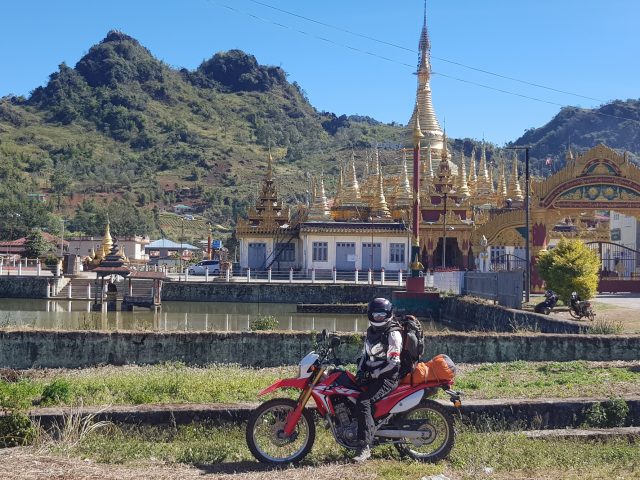
With the benefit of hindsight, not having a guide turned out to add to the mystery of exploration in Myanmar. We were humbled with the hospitality of the mountain tribes in Mindat, deep in the western jungles, even without the benefit of being able to translate their language. Every time Kim took off her full-face motorcycle helmet, the villagers would come streaming out of their bamboo huts, as a blonde Westerner was evidently a sight to see.
Personal Health and Inoculation
Since Myanmar is a remote third-world country, sanitisation must be high on your priority list. Hand wipes can come in very handy when a hot shower is not available for days. Also, don’t be afraid to ask the local villagers for a bucket with some clean river water when required. Before the trip, ensure that you have as a minimum the correct inoculations for hepatitis A and B, tetanus, typhoid, and yellow fever. A good anti-malaria drug such as mefloquine is also highly recommended to have on hand.
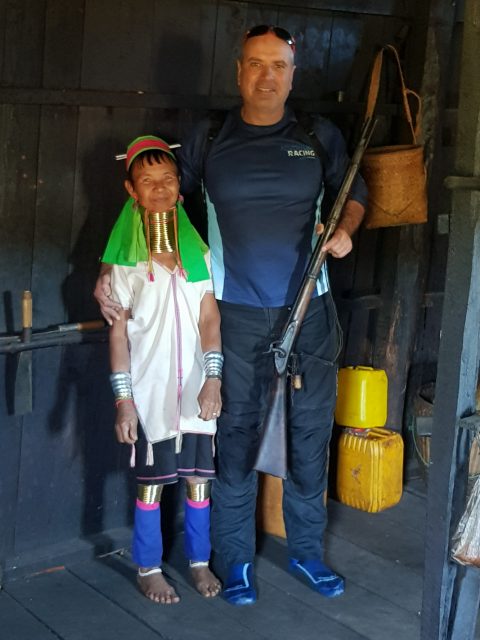

We packed a small first aid kit that included anti-fungal creams, a broad-spectrum antibiotic, and rehydration tablets. You are not going to find a local pharmacy around these parts unless you are in the bigger cities, so don’t overlook this requirement.
In some of the remote villages, there are no bed and breakfasts or accommodation available. Introduce yourself to the local chief of the tribe, and they will often be willing to share their private residence for a small fee. The obvious advantage of this is safety: nobody will mess with your bike, and you get to experience local culture and food firsthand.
One of the highlights of the trip was our arrival at one of Asia’s great inland lakes, Inle Lake in the Shan Hills. The local fishermen on the lake practise a distinctive rowing style which involves wrapping one leg around the oar whilst balancing on the other leg on the stern of their small boats. As much of the lake is covered by water plants and reeds, this unique style affords them the ability to see above the vegetation whilst rowing. It is well worth planning your trip to spend at least two or three days around this lake.

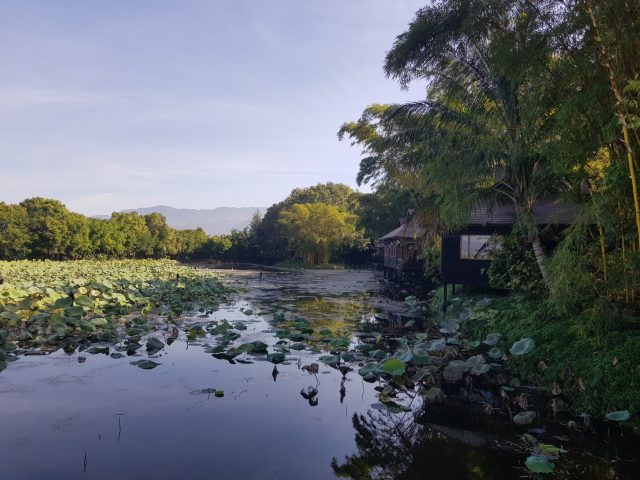
Motorcycle Spares and Maintenance
On any expedition, especially on dirt or adventure bikes, weight is of paramount importance. The lighter you can travel, the better. Having said that, when you end up on something as small as a 250cc machine, you must plan even more stringently on what to take on a three-week journey. If we were travelling on GS 1250s, we could easily have had 100 pounds of gear with us, but on the little Hondas, we had to make do with less than 40 pounds of total gear.
We knew that the machines were relatively new beforehand when we rented them and that they just had a major service as well. So, we decided to keep tools down to a minimum in the event of a breakdown. We ensured beforehand that the dirt bikes were equipped with 30/70 on-road/off-road tires which turned out to be a good balance in terms of the terrain encountered.

Owing to the large number of scooters that the Myanmar people use for daily transport, it is relatively easy to find a repair shop, even in the remotest of villages.
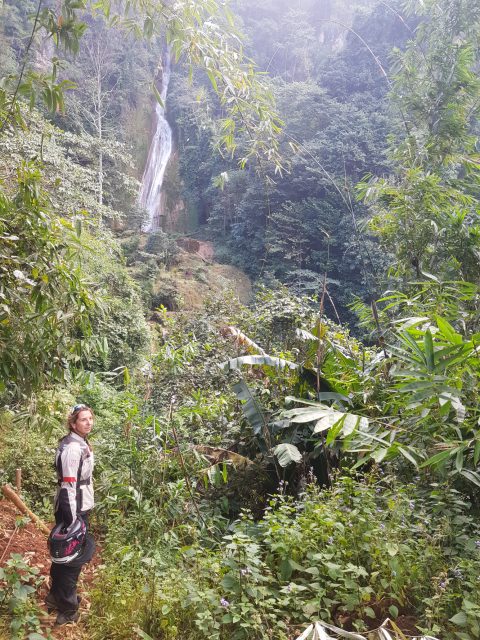
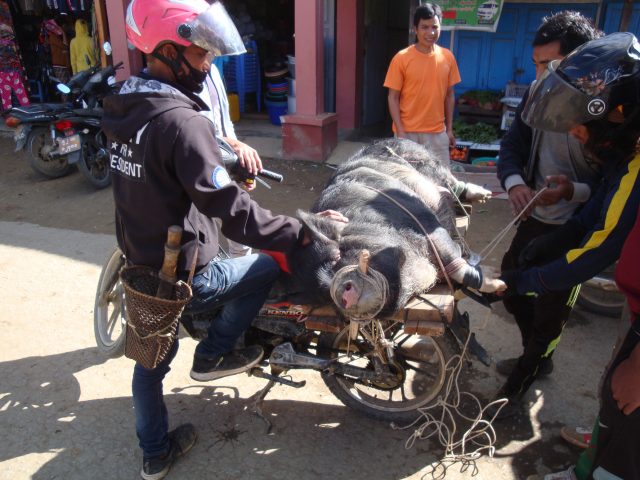
Your biggest risk would be to either have a flat tire or to run out of fuel. Plan your refuelling stops carefully as you have a limited range on a small off-road bike, and the country has some very big distances to cover. In addition, be careful of contaminated fuel.
We carried a small tire repair kit, just in case, but for the rest of the time, a Leatherman, duct tape, and cable/zip ties should be enough. Interestingly enough, it was impossible to get hold of chain spray at any point in time. Ask at any repair shop for some old engine oil and apply it with an old toothbrush instead—it works like a charm.
General Expedition and Kit List
General Expedition and Kit List are normally divided into accessories, camping gear, and miscellaneous kit before we travel. Carry a survival watch, such as a Garmin or Suunto, in case your GPS on your mobile phone fails. Steel putty is vital in case you have a major spill on one of the dirt bikes whilst riding. We packed a small Mace spray each for personal protection, but to be honest, we never once felt threatened in Myanmar.
Rider and Protective Clothing
When packing, remember the lighter the load, the better. Separate your packing list for clothing into riding gear, general clothing, headgear, and footwear.
I highly recommend bringing your own full-face helmet and riding gear. You already know it fits, it is clean, and you can have your intercom system fitted beforehand. Considering the vast distances that you cover via dirt bike in Myanmar, it helps to have instant communication between the riders—from shouting warnings about oncoming trucks and meandering bush pigs on the road to highlighting some beautiful temples or pagodas in the jungle. Just remember to charge them at the same time as your mobile phone when you arrive at your destination each night.
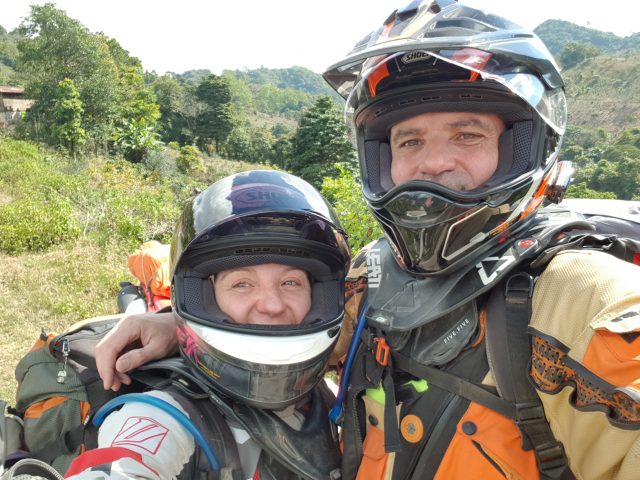
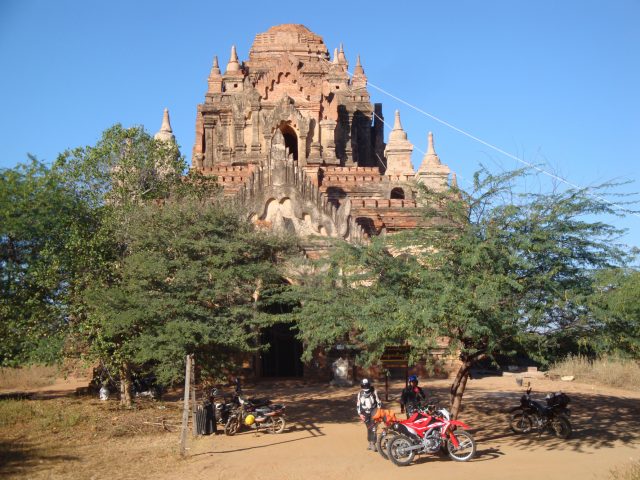
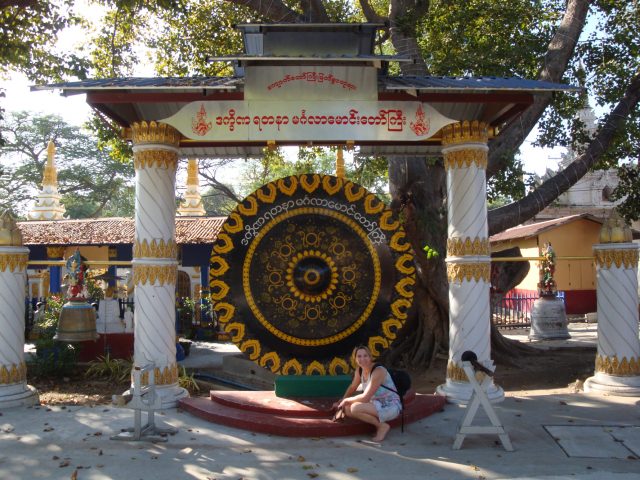
Travel Documentation and Passports
Being from South Africa, we easily applied for a visa online for Myanmar. It is cheaper to book your tickets to Bangkok in Thailand and then take a regional flight into Mandalay. Remember to upload all your travel documentation and inoculation certificates into the cloud, either via Microsoft OneDrive or Dropbox. In the event of a lost passport, you can easily retrieve it and access to emergency travel documents from your local embassy in Myanmar. Credit cards only work in the large cities, so ensure that you always have enough local currency to pay for food and fuel. At the end of the article is a handy list of the minimum travel documentation to pack beforehand.
One of the major highlights of the trip were the golden temples of Bagan that easily rival the magnificent pagodas of Angkor Wat in Cambodia. It should be a bucket list entry for any adventure biker. The hundreds of temples that are located across the plains of Bagan are the most inspiring testament to the religious devoutness of Myanmar’s people and rulers over the centuries. These Burmese temples are rated as some of the richest archaeological sites in Asia. If you have the spare funds available, park your bike here and rent an early morning hot air balloon for the view of a lifetime!


Whilst you enjoy riding the twisty mountain roads in Myanmar, do not forget to sample the exotic food. Bear in mind that fuel will be at least 50 percent cheaper than South Africa and many other parts of the world. Data costs for mobile phones are at least 70 percent less, and Myanmar’s local coffee (Genius) and whisky (Grand Royal) are exquisite and cost a fraction of what we pay for at home.
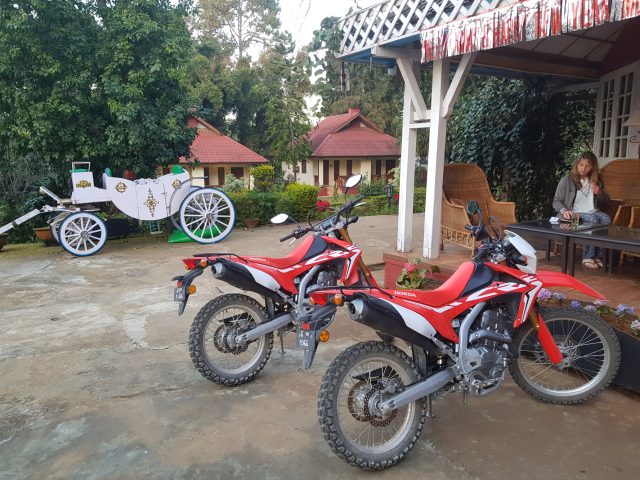
Our expedition finally ended after travelling more than 1,600 miles in 21 days without a single breakdown on the two trusty Honda CRF 250s. Would we do it again? Hell, yes— Myanmar is a biker’s paradise.
Final Note to Fellow Riders
Myanmar’s scenery rates an easy 4/5. You will experience some of the most majestical rain forests on the planet, curvy mountain roads, and beautiful freshwater lakes.
For those history buffs amongst you, give it at least a rating of 4/5 as well. Burma has a rich, if somewhat brutal history, but with amazing pagodas and temples to rival the best in Asia.
On a cautionary note, bear in mind that traffic is insane in the city areas. The rural traffic does not adhere to the rules of the road. Road conditions are generally single lane, single track, and in the rural areas are completely dirt and mud. Be Alert. ALL THE TIME. Massive trucks tend to come down the many mountain passes at blinding speed and will consume both sides of the road, without any yellow lanes for you or your bike to pass safely. Hence the need for intercom systems between the riders as well.
Safe riding!
Google Maps Link of Adventure Bike Road Trip:
Our Itinerary
| Destination | State/Territory | Attraction |
| Thiri Thit Sar Hotel | Mandalay | Shwenandaw Monastery |
| Thiri Thit Sar Hotel | Mandalay | Royal Palace |
| Se Naing Guest House | Mindat, Chin State | Nat Ma Taung National Park |
| Mindat Trek | Mindat, Chin State | Nat Ma Taung National Park |
| Mindat Trek | Mindat, Chin State | Nat Ma Taung National Park |
| Se Naing Guest House | Mindat, Chin State | |
| Floral Breeze Hotel | Kanpetlet, Chin State | Mt.Victoria |
| Sky Palace Hotel | Bagan, Mandalay | Mya Zedi Stone, Irrawady, Kyaukgu Umin |
| Pine Breeze Hotel | Kalaw, Shan State | Myoma Monastery, Green Hill Elephants |
| Famous Hotel Loikaw | Kayah State | Shwe Kyaung-pyi |
| Famous Hotel Loikaw | Kayah State | Kyat Cave and Nan Koot Hill |
| Famous Hotel Loikaw | Kayah State | Lawpita Viewpoint |
| Inle Resort | Shan State | Inle Lake |
| Inle Resort | Shan State | Floating Gardens |
| Shwe Gu Gu Guest House | Shan State | Taw Kyal Waterfall |
| Kandawgyi Hill Resort | Pyin Oo Lwin, Mandalay | National Kandawgyi Gardens |
| Thiri Thit Sar Hotel | Mandalay | Lions of Stone |
| Thiri Thit Sar Hotel | Mandalay | Sandamuni Pagoda |
Our Packing List for the Expedition
| Check |
Myanmar/Description |
Clothes |
|
| Technical T-shirts and shorts | |
| Long hiking trousers | |
| Normal clothes: jeans, underwear, socks, T-shirts | |
| Bike jacket pants | |
| Leatt neck brace | |
| Helmet and gloves | |
| Riding boots | |
| Hiking gloves | |
| Waterproof trousers and jacket | |
| Warm gloves | |
| Sarong | |
Head Gear |
|
| Sun hat and cap | |
| Buff light and beanie | |
| Headlamp (x 2) | |
| Spare batteries | |
| Spare flashlight | |
| Sunglasses | |
Footwear |
|
| Salomons | |
| Trekking or river shoes | |
| Sandals/flip-flops | |
| Thin socks (four pairs of smooth wool to be worn closest to the skin) | |
Camping/Hiking Equipment |
|
| Backpack: 80 or 85 litres | |
| Sleeping bag plus thermal layer | |
| Thermal mats: neoprene or ThermaRest | |
| Plate, cup, and cutlery | |
Medical/Hydration and Sanitation |
|
| Water Bottle: 2 x 1-litre, wide-mouth water bottles | |
| Thermos, 1-litre | |
| Sunscreen and lip balm, SPF 40 | |
| Personal first aid kit | |
| Pee Bottle and adapter | |
| Rehydration tablets | |
| Puritabs and Celebrex | |
| Anti-malaria tabs | |
| Insect repellent/cream | |
| Antibiotics | |
| Lighter and fire starters | |
| Hand cleaner/wet wipes | |
| Toilet paper | |
| Toiletry bag and towels | |
Travel |
|
| Large duffel bag | |
| Small duffel bag: (foldable) or backpack | |
| Spare locks (1 bag pack, 2 duffel bags) | |
Miscellaneous |
|
| Ankle guard, knee guard | |
| Spare laces and Super Glue | |
| Duct tape and cable ties | |
| Big Voltaren tube | |
| Compass and mirror | |
| Pen | |
| Reading glasses | |
| Rope | |
| Spare nuts/bolts, steel putty, wire | |
| Black bag and ziplock bags | |
| Waterproof 20-litre bag (or small one) | |
Accessories |
|
| Leatherman tool | |
| Camera & Charger | |
| Kindle & Chargers | |
| Cell phone and charger | |
| International plug adapter | |
| Power Monkey or battery bank | |
| GPS, handheld | |
| Survival watch and charger | |
Travel |
|
| Passport and eTicket (and copies of both) | |
| Travel itinerary | |
| Forex | |
| Travel insurance | |
| Inoculation/yellow fever | |
| Discovery MedAid card | |
| Hotel reservation forms | |
| Credit cards | |
| Dropbox, activated and updated | |
| Maps of region | |
| Visa | |
| Mace spray |
About the author: Johan de Villiers
Johan has adventure biked extensively through several South, Central, and East African countries on either one of his KTMs or Triumph Tigers. In addition to that, Johan enjoys travelling in Southeast Asia, including hiking Nepal and staying with the remote Cambodian jungle tribes on the border of Laos. When not overlanding through Africa, he is also a seasoned off-road and rally racer on two wheels. In his spare time, Johan is a qualified helicopter pilot, high altitude mountaineer, and a regular contributor to various overland and aviation publications.


